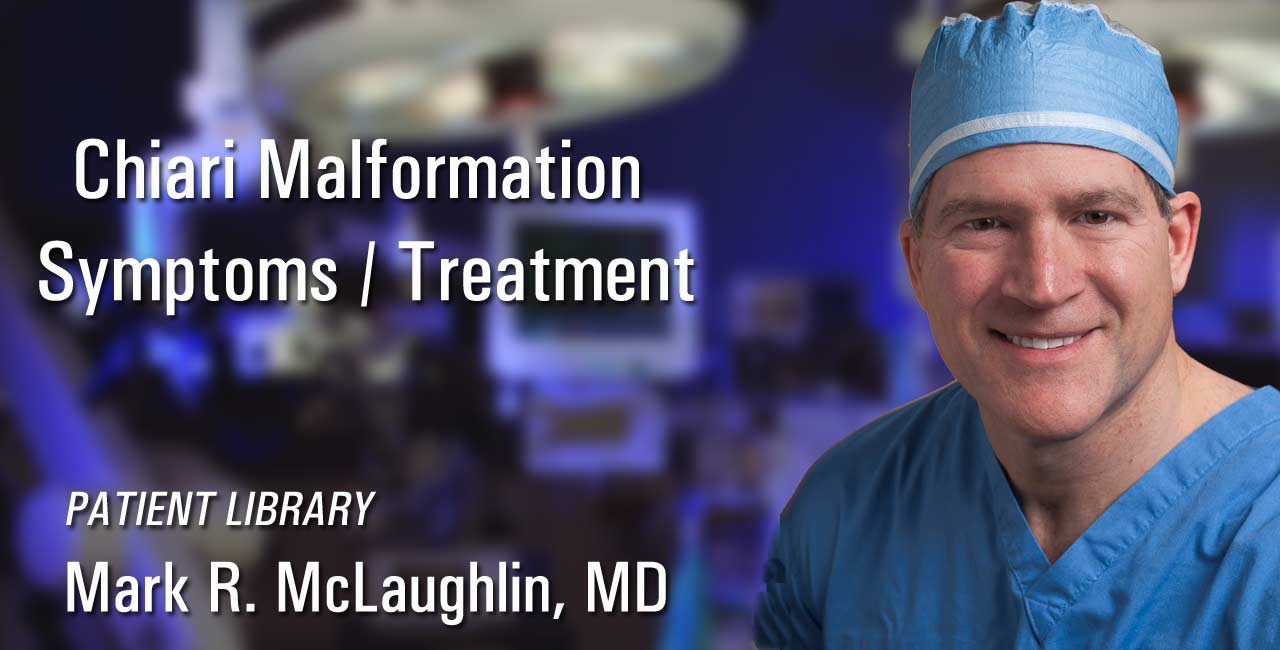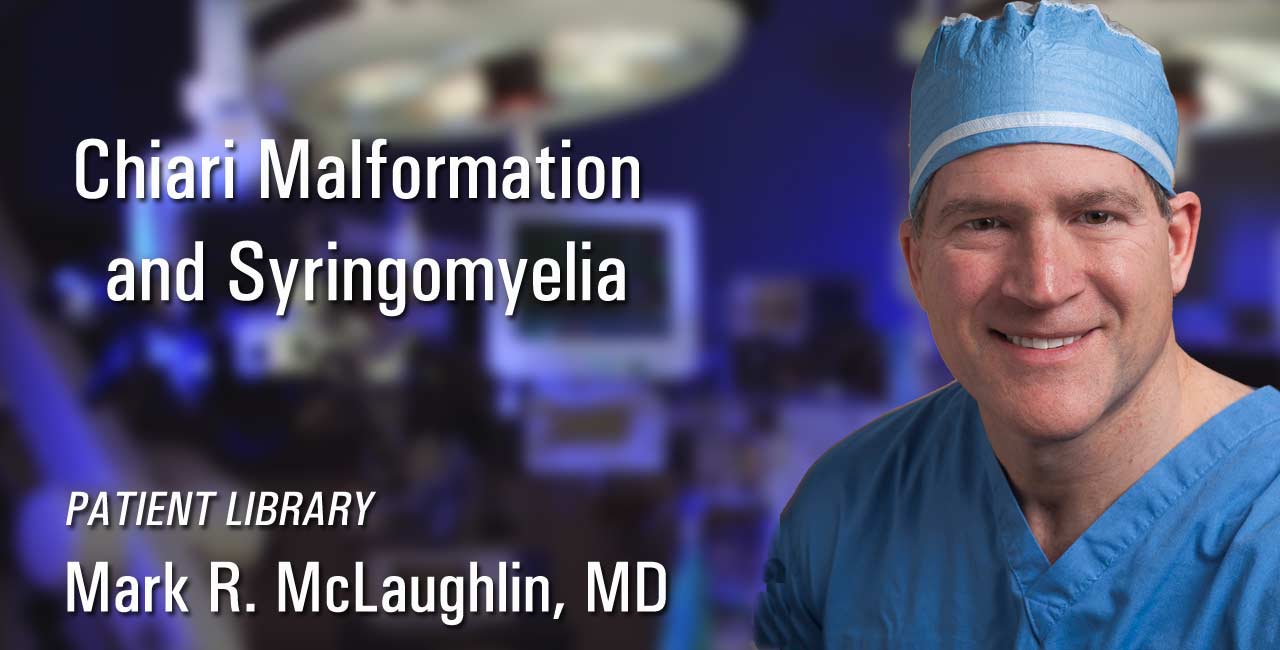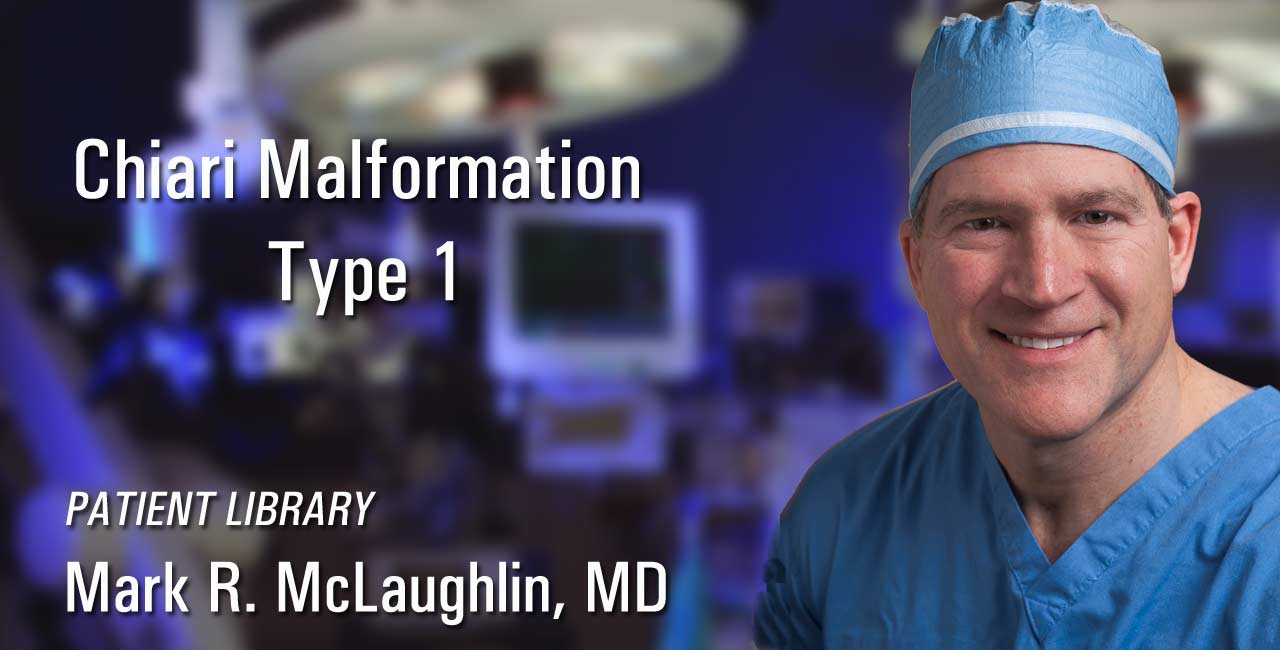Chiari Malformation: Symptoms and Treatment

By Mark R. McLaughlin, MD, FACS, FAANS
Chiari Malformation is a complex and serious neurological disorder. There are different types of Chiari Malformation which are discussed here on our website. Chiari Malformations have a wide range of different kinds of symptoms. Most patients will exhibit multiple symptoms, however some people with a Chiari Malformation will have no symptoms whatsoever. In other words, each case is different and the diagnosis of a Chiari Malformation requires an experienced neurosurgeon.
Chiari symptoms can also be complicated by related or concurrent conditions such as syringomyellia, intracranial hypertension, or other genetic disorders.
The Symptoms of Chiari Malformation may include:
- Severe Headaches (often caused by sneezing, coughing, bending over)
- Pain in the neck and shoulders
- Trouble swallowing (occasionally trouble speaking)
- Sleep apnea and respiratory problems
- Loss of bladder or bowel control
- Loss of fine motor control
- Numbness in the hands and feet
- Weakness or stiffness in arms and legs
- Problems with balance
The symptoms of Chiari are caused by one or more of:
- Compression of cranial nerves
- Compression of the brainstem
- Compression of the cerebellum
- A disruption to the normal flow of Cerebrospinal fluid (CSF)
- Increase in CSF pressure
- Damage to Nerves
Chiari headaches are often described by patients as beginning in the back of the head, and then radiating forward. The pain is usually described as intense pressure.
Chiari Malformation was at one time considered to be a rare condition, but with the development and availability of Magnetic Resonance Imaging (MRI), we have learned that condition is more common than once thought.
If you suspect that you may suffer from Chiari Malformation, or if you exhibit the symptoms described here, I urge you to contact a Chiari experienced neurosurgeon for evaluation.
Treatment of Chiari Malformation
Many patients with a Chiari Malformation are asymptomatic (they show no symptoms), or they experience symptoms which do not excessively interfere with the activities of daily living. In some cases, medications are used to manage symptoms such as pain.
The only treatment that can correct the functional deficits or stop the progression of damage to the nervous system is surgery. The goals of surgery are to relieve pressure on the brain and spinal cord, and to re-establish normal circulation of the Cerebrospinal Fluid. This is accomplished by creating more room around the malformation.
A variety of surgical procedures may be utilized to accomplish the goal. Your neurosurgeon may remove a small section of bone at the back of your skull, or in the upper cervical spine to make more room for the part of your brain which is affected by Chiari Malformation. (the cerebellum) In most cases, the covering of the brain may be enlarged with a patch. If you have fluid buildup in your brain, or a fluid filled cavity in the spine, you may also require a shunt to drain excess fluid.
Although rare, a patient may suffer from an "acquired" Chiari as a result of a cyst or tumor pressing the cerebral tonsils downward, or from drainage of spinal fluid down the spine. Drainage can be either related to a lumboperitoneal shunt or a dural sleeve. In these situations, surgical intervention to remove the causative problem can sometimes indirectly fix the Chiari without operating on the back of the neck.
The specifics of the appropriate surgery vary by case. As with symptoms and diagnosis, each case of Chiari Malformation is unique, and the selection of the correct surgical treatment is ultimately dependent upon the experience and judgment of your neurosurgeon.
Other resources include:
Chiari Malformation Factsheet at NIH
Chiari Malformation Overview at American Association of Neurological Surgeons
Chiari Malformation Information for Patients - Expert Princeton Neurosurgeon
Chiari Malformation and Syringomyelia
Chiari Malformation is a disorder in which certain structures in the brain fail to develop normally. SM is a disorder that develops when CSF enters the spinal cord and forms a cavity called a syrinx
Chiari Malformation Type 1
Chiari malformation is a condition in which brain tissue protrudes into the spinal canal. Chiari Malformation Type 1 is one of the four most common types of the condition.





